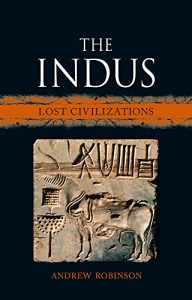When Alexander the Great’s army invaded the valley of the Indus River in the fourth century BC, it was wholly unaware that this region of northwest India had once been the centre of a civilization worthy of comparison with ancient Egypt and Mesopotamia. The Indus civilization flourished for half a millennia from about 2600 BCE to 1900 BCE, when it mysteriously declined and eventually vanished. It remained invisible for almost 4,000 years, until its ruins were discovered in the 1920s by British and Indian archaeologists. Today, after almost a century of excavation, it is regarded as the beginning of Indian civilization and possibly the origin of Hinduism.
More than 1,000 Indus settlements covered at least 800,000 square kilometres of what is now Pakistan and India: the most extensive urban culture of its age, with a vigorous maritime export trade to the Persian Gulf and cities such as Ur. The two largest Indus cities, Harappa and Mohenjo-daro – a UNESCO World Heritage Site – boasted sophisticated street planning and house drainage, including the world’s first toilets, along with finely crafted gemstone jewellery and an exquisite, part-pictographic writing system carved on seal stones that has defied numerous attempts at deciphering. Astonishingly, there is no evidence for armies or warfare.
The Indus is a fascinating look at the vital legacy of the Indus within modern India and an accessible introduction to this tantalizing ‘lost’ civilization.
More than 1,000 Indus settlements covered at least 800,000 square kilometres of what is now Pakistan and India: the most extensive urban culture of its age, with a vigorous maritime export trade to the Persian Gulf and cities such as Ur. The two largest Indus cities, Harappa and Mohenjo-daro – a UNESCO World Heritage Site – boasted sophisticated street planning and house drainage, including the world’s first toilets, along with finely crafted gemstone jewellery and an exquisite, part-pictographic writing system carved on seal stones that has defied numerous attempts at deciphering. Astonishingly, there is no evidence for armies or warfare.
The Indus is a fascinating look at the vital legacy of the Indus within modern India and an accessible introduction to this tantalizing ‘lost’ civilization.






